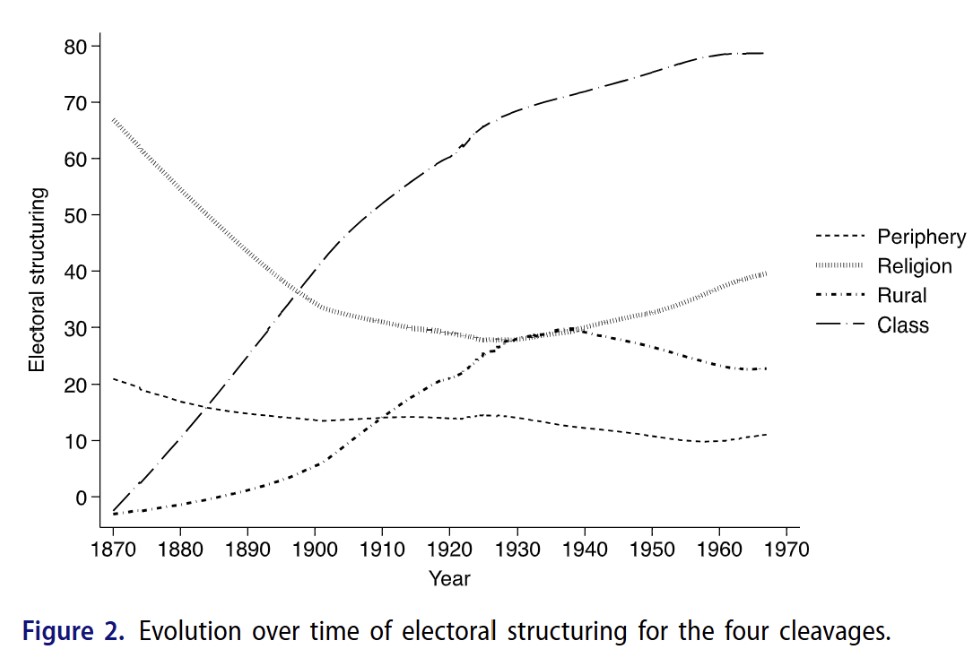To cite the article:
Emanuele, V. and Marino, B. (2025), Lipset and Rokkan meet data: the electoral structuring of traditional cleavages, 1870-1967, West European Politics https://doi.org/10.1080/01402382.2025.2491274.
Abstract
The unprecedented, historically-grounded data availability that researchers enjoy today allows them to move beyond mere anecdotal evidence and properly test, through quantitative data, Lipset and Rokkan’s conditions for cleavage electoral structuring and their ‘freezing hypothesis’. In this article, Lipset and Rokkan’s conditions are translated into empirically testable hypotheses related to the evolution and determinants of cleavage electoral structuring. The empirical analysis – applied to 17 Western European countries from the late nineteenth century to 1967 – shows that the freezing hypothesis shall be reconsidered, as inconclusive evidence is found about the stabilisation of the four cleavages between the 1920s and the 1960s. Moreover, only some of the expectations deriving from Lipset and Rokkan’s original conditions are confirmed, while others are rejected. Finally, the analysis unveils the role played by some factors that have been previously overlooked, thus contributing to redefining the narrative of cleavages’ electoral structuring.
